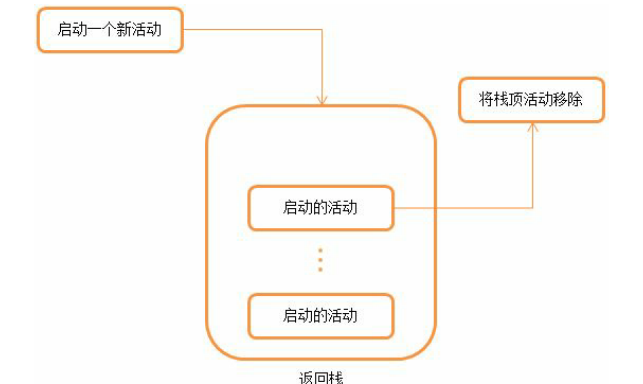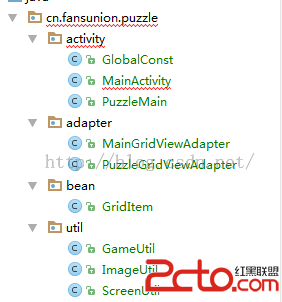編輯:關於Android編程
本文實例講述了Android編程使用自定義View實現水波進度效果。分享給大家供大家參考,具體如下:
首先上效果圖:

簡介:
1.自動適應屏幕大小;
2.水波自動橫向滾動;
3.各種繪制參數可通過修改常量進行控制。
代碼不多,注釋也比較詳細,全部貼上:
(一)自定義組件:
/**
* 水波進度效果.
*/
public class WaterWaveView extends View {
//邊框寬度
private int STROKE_WIDTH;
//組件的寬,高
private int width, height;
/**
* 進度條最大值和當前進度值
*/
private float max, progress;
/**
* 繪制波浪的畫筆
*/
private Paint progressPaint;
//波紋振幅與半徑之比。(建議設置:<0.1)
private static final float A = 0.05f;
//繪制文字的畫筆
private Paint textPaint;
//繪制邊框的畫筆
private Paint circlePaint;
/**
* 圓弧圓心位置
*/
private int centerX, centerY;
//內圓所在的矩形
private RectF circleRectF;
public WaterWaveView(Context context) {
super(context);
init();
}
public WaterWaveView(Context context, AttributeSet attrs) {
super(context, attrs);
init();
}
public WaterWaveView(Context context, AttributeSet attrs, int defStyleAttr) {
super(context, attrs, defStyleAttr);
init();
}
//初始化
private void init() {
progressPaint = new Paint();
progressPaint.setColor(Color.parseColor("#77cccc88"));
progressPaint.setAntiAlias(true);
textPaint = new Paint();
textPaint.setColor(Color.WHITE);
textPaint.setAntiAlias(true);
circlePaint = new Paint();
circlePaint.setStyle(Paint.Style.STROKE);
circlePaint.setAntiAlias(true);
circlePaint.setColor(Color.parseColor("#33333333"));
autoRefresh();
}
@Override
protected void onMeasure(int widthMeasureSpec, int heightMeasureSpec) {
super.onMeasure(widthMeasureSpec, heightMeasureSpec);
if (width == 0 || height == 0) {
width = getWidth();
height = getHeight();
//計算圓弧半徑和圓心點
int circleRadius = Math.min(width, height) >> 1;
STROKE_WIDTH = circleRadius / 10;
circlePaint.setStrokeWidth(STROKE_WIDTH);
centerX = width / 2;
centerY = height / 2;
VALID_RADIUS = circleRadius - STROKE_WIDTH;
RADIANS_PER_X = (float) (Math.PI / VALID_RADIUS);
circleRectF = new RectF(centerX - VALID_RADIUS, centerY - VALID_RADIUS,
centerX + VALID_RADIUS, centerY + VALID_RADIUS);
}
}
private Rect textBounds = new Rect();
//x方向偏移量
private int xOffset;
@Override
protected void onDraw(Canvas canvas) {
super.onDraw(canvas);
//繪制圓形邊框
canvas.drawCircle(centerX, centerY, VALID_RADIUS + (STROKE_WIDTH >> 1), circlePaint);
//繪制水波曲線
canvas.drawPath(getWavePath(xOffset), progressPaint);
//繪制文字
textPaint.setTextSize(VALID_RADIUS >> 1);
String text1 = String.valueOf(progress);
//測量文字長度
float w1 = textPaint.measureText(text1);
//測量文字高度
textPaint.getTextBounds("8", 0, 1, textBounds);
float h1 = textBounds.height();
float extraW = textPaint.measureText("8") / 3;
canvas.drawText(text1, centerX - w1 / 2 - extraW, centerY + h1 / 2, textPaint);
textPaint.setTextSize(VALID_RADIUS / 6);
textPaint.getTextBounds("M", 0, 1, textBounds);
float h2 = textBounds.height();
canvas.drawText("M", centerX + w1 / 2 - extraW + 5, centerY - (h1 / 2 - h2), textPaint);
String text3 = "共" + String.valueOf(max) + "M";
float w3 = textPaint.measureText(text3, 0, text3.length());
textPaint.getTextBounds("M", 0, 1, textBounds);
float h3 = textBounds.height();
canvas.drawText(text3, centerX - w3 / 2, centerY + (VALID_RADIUS >> 1) + h3 / 2, textPaint);
String text4 = "流量剩余";
float w4 = textPaint.measureText(text4, 0, text4.length());
textPaint.getTextBounds(text4, 0, text4.length(), textBounds);
float h4 = textBounds.height();
canvas.drawText(text4, centerX - w4 / 2, centerY - (VALID_RADIUS >> 1) + h4 / 2, textPaint);
}
//繪制水波的路徑
private Path wavePath;
//每一個像素對應的弧度數
private float RADIANS_PER_X;
//去除邊框後的半徑(即內圓半徑)
private int VALID_RADIUS;
/**
* 獲取水波曲線(包含圓弧部分)的Path.
*
* @param xOffset x方向像素偏移量.
*/
private Path getWavePath(int xOffset) {
if (wavePath == null) {
wavePath = new Path();
} else {
wavePath.reset();
}
float[] startPoint = new float[2]; //波浪線起點
float[] endPoint = new float[2]; //波浪線終點
for (int i = 0; i <= VALID_RADIUS * 2; i += 2) {
float x = centerX - VALID_RADIUS + i;
float y = (float) (centerY + VALID_RADIUS * (1.0f + A) * 2 * (0.5f - progress / max)
+ VALID_RADIUS * A * Math.sin((xOffset + i) * RADIANS_PER_X));
//只計算內圓內部的點,邊框上的忽略
if (calDistance(x, y, centerX, centerY) > VALID_RADIUS) {
if (x < centerX) {
continue; //左邊框,繼續循環
} else {
break; //右邊框,結束循環
}
}
//第1個點
if (wavePath.isEmpty()) {
startPoint[0] = x;
startPoint[1] = y;
wavePath.moveTo(x, y);
} else {
wavePath.lineTo(x, y);
}
endPoint[0] = x;
endPoint[1] = y;
}
if (wavePath.isEmpty()) {
if (progress / max >= 0.5f) {
//滿格
wavePath.moveTo(centerX, centerY - VALID_RADIUS);
wavePath.addCircle(centerX, centerY, VALID_RADIUS, Path.Direction.CW);
} else {
//空格
return wavePath;
}
} else {
//添加圓弧部分
float startDegree = calDegreeByPosition(startPoint[0], startPoint[1]); //0~180
float endDegree = calDegreeByPosition(endPoint[0], endPoint[1]); //180~360
wavePath.arcTo(circleRectF, endDegree - 360, startDegree - (endDegree - 360));
}
return wavePath;
}
private float calDistance(float x1, float y1, float x2, float y2) {
return (float) Math.sqrt((x1 - x2) * (x1 - x2) + (y1 - y2) * (y1 - y2));
}
//根據當前位置,計算出進度條已經轉過的角度。
private float calDegreeByPosition(float currentX, float currentY) {
float a1 = (float) (Math.atan(1.0f * (centerX - currentX) / (currentY - centerY)) / Math.PI * 180);
if (currentY < centerY) {
a1 += 180;
} else if (currentY > centerY && currentX > centerX) {
a1 += 360;
}
return a1 + 90;
}
public void setMax(int max) {
this.max = max;
invalidate();
}
//直接設置進度值(同步)
public void setProgressSync(float progress) {
this.progress = progress;
invalidate();
}
/**
* 自動刷新頁面,創造水波效果。組件銷毀後該線城將自動停止。
*/
private void autoRefresh() {
new Thread(new Runnable() {
@Override
public void run() {
while (!detached) {
xOffset += (VALID_RADIUS >> 4);
SystemClock.sleep(100);
postInvalidate();
}
}
}).start();
}
//標記View是否已經銷毀
private boolean detached = false;
@Override
protected void onDetachedFromWindow() {
super.onDetachedFromWindow();
detached = true;
}
}
(二)使用方法:
在xml布局中引入上述組件,然後在activity或fragment中設置屬性:
WaterWaveView bar = (WaterWaveView) getActivity().findViewById(R.id.water_wave_view);
bar.setMax(500);
bar.setProgressSync(361.8f);
更多關於Android相關內容感興趣的讀者可查看本站專題:《Android開發動畫技巧匯總》、《Android編程之activity操作技巧總結》、《Android視圖View技巧總結》、《Android布局layout技巧總結》、《Android開發入門與進階教程》、《Android資源操作技巧匯總》及《Android控件用法總結》
希望本文所述對大家Android程序設計有所幫助。
 Android 活動的生命周期
Android 活動的生命周期
1.返回棧Android 是使用任務(Task)來管理活動的,一個任務就是一組存放在棧裡的活動的集合,這個棧也被稱作返回棧(Back Stack)。棧是一種後進先出的數據
 弄明白Android 接口回調機制
弄明白Android 接口回調機制
以前對於這個機制理解不夠深刻,現在重新整理下思路。 一、建模 我理解的接口回調就是,我這個類實現了一個接口裡的方法doSomething,然後注冊到你這裡,然後我就去做別
 Android自定義view制作絢麗的驗證碼
Android自定義view制作絢麗的驗證碼
廢話不多說了,先給大家展示下自定義view效果圖,如果大家覺得還不錯的話,請繼續往下閱讀。怎麼樣,這種驗證碼是不是很常見呢,下面我們就自己動手實現這種效果,自己動手,豐衣
 Android群英傳-拼圖游戲puzzle-代碼設計和實現
Android群英傳-拼圖游戲puzzle-代碼設計和實現
上個周末,3個小時總體上讀完了《Android群英傳》,本周主要在研究代碼層次的設計和實現。編譯安裝在手機上,玩了幾把,結合代碼,一周時間才掌握了整體的思路。大部分時間,